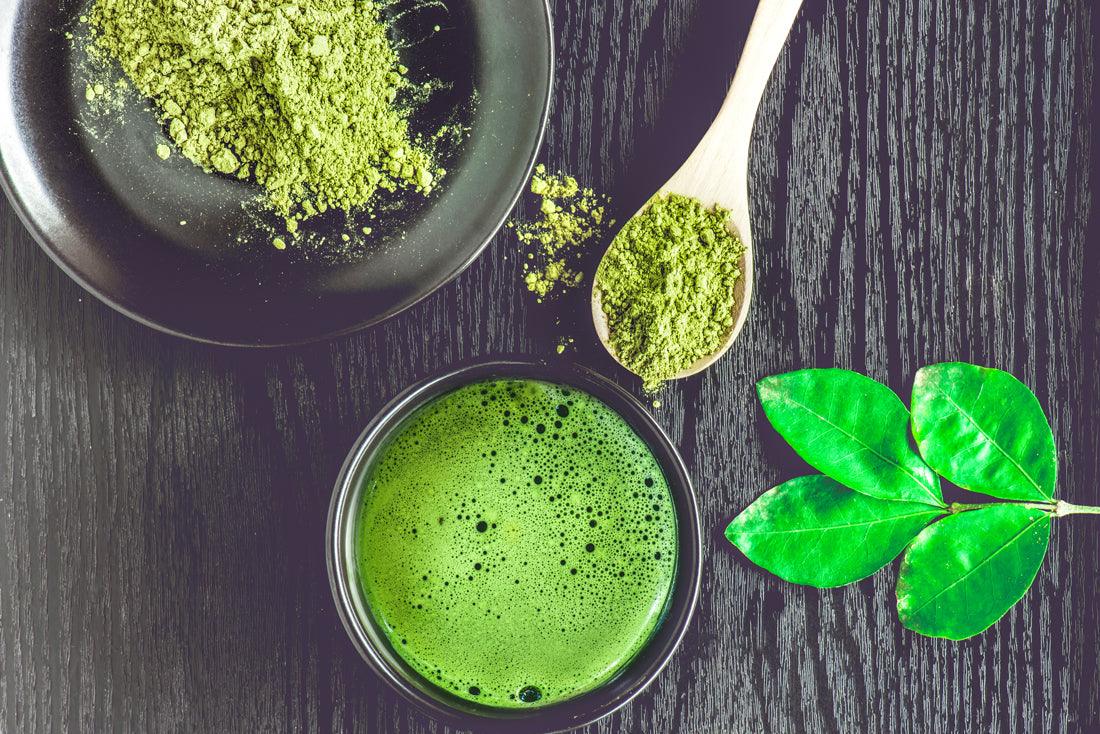

ECGC Revs Up Your Metabolism
Table of Contents
ECGC Revs Up Your Metabolism and Suppresses Inflammation
The prevalence of obesity has steadily increased over the past three decades both in the United States and worldwide. Recent studies have shown the role of dietary polyphenols in the prevention of obesity and obesity-related chronic diseases. A recent review paper published in the prestigious Journal of Nutritional Biochemistry titled,” Novel insights of dietary polyphenols and obesity.“ suggests that tea may be a way to prevent and treat obesity. The researchers evaluated the impact of commonly consumed polyphenols, including green tea catechins and epigallocatechin gallates, resveratrol, and curcumin, on obesity and obesity-related-inflammation. Cellular studies demonstrated that these dietary polyphenols suppress the formation of new fat cells, stimulate fat mobilization, and also reduces inflammation.
Obesity and Inflammation
One of the major findings of the decade is that fat cells are not just inactive globules but instead adipose tissue is an active endocrine cell. Adipose tissue sends out important hormones that are critical to overall energy balance and homeostasis. One interesting finding that obesity researchers have found is that adipocyte cells from obese patients are inflamed. Thus, obesity is a chronic low-grade inflammation.
Putting out the Obesity Inflammation Flame

The beneficial effects of some diets such as the Mediterranean diets for weight loss are attributed for the most part to the significant amounts of bioactive components with recognized anti-inflammatory and anti-oxidant properties of the fruits and vegetables in the Mediterranean diets. In a systemic review by Esfahani et al, the authors reported that daily consumption of mixed fruits and vegetable supplements significantly increases serum levels of antioxidant pro-vitamins and vitamins (β-carotene, vitamins C and E) and folate and reduces homocysteine and markers of oxidative stress. These findings emphasize the beneficial effects of food components and further support the dietary recommendations for Americans that emphasize diets rich in fruits and vegetables for the prevention of chronic diseases including obesity. Indeed, several cell, animal and human studies provide strong evidence that dietary bio-active compounds act as anti-oxidant and anti-inflammatory agents to increase thermogenesis and energy expenditure while decreasing inflammation and oxidative stress, further supporting progress towards weigh loss and/or decreased metabolic disorders. This inflammation-associated obesity can be prevented or even reversed with weight reduction that can be achieved via energy restriction, increased physical activity, and anti-oxidant rich foods. For example, consumption of foods rich in bio-active anti-inflammatory compounds, such as omega-3 fatty acids and polyphenols, has been documented to decrease inflammation. Another potent ingredient that reduces inflammation is green tea.
Green Tea: Mothers Nature’s Fire Extinguisher for Inflammation
Green tea is made from the dried leaves of the Camellia Sinensis plant. Compared to black tea and oolong tea, green tea contains the highest amount of green tea catechins, the major polyphenols in green tea that constitutes about 35% of its total dry weight. A 2-gram bag of green tea contains about 500 mg of green tea catechins. The most abundant green tea catechins are (−)-epigallocatechin gallate (EGCG), which accounts for about 68–69% of green tea catechins. The anti-obesity potential of green tea catechins, particularly EGCG, has been shown in cell culture, animal and human studies.

Several systemic reviews have been published in the past four years. Based on a meta-analysis of 11 studies, Hursel et al. concluded that catechin or an EGCG-caffeine mixture contained in green tea had a small effect on weight loss and weight maintenance. Phung et al. reported that participants in intervention groups who received green tea catechins (GTC) in combination with caffeine had a decreased BW and waist circumference, compared with the control groups containing similar amounts of caffeine.
Published studies show that obesity-associated inflammation, a major contributor to metabolic disorders in humans, can be prevented or partially reversed by dietary polyphenols such as those reviewed herein. Mechanistically, these dietary polyphenols exert their additive and/or synergistic effects through reducing obesity related inflammation. However, most dietary polyphenols have relatively short half-lives once ingested due to rapid metabolism, so it is important that their consumption is maintained throughout the life span. In summary, cellular and animal studies have shown that dietary supplementation with EGCG or GTE is a potentially viable nutritional strategy for the prevention of obesity.
Tsai AG, Williamson DF, Glick HA. Direct medical cost of overweight and obesity in the USA: a quantitative systematic review. Obesity reviews : an official journal of the International Association for the Study of Obesity. 2011;12:50–61.
Goran MI, Alderete TL. Targeting adipose tissue inflammation to treat the underlying basis of the metabolic complications of obesity. Nestle Nutrition Institute workshop series. 2012;73:49–60. discussion p1-6.
Kalupahana NS, Claycombe KJ, Moustaid-Moussa N. (n-3) Fatty acids alleviate adipose tissue inflammation and insulin resistance: mechanistic insights. Advances in nutrition. 2011;2:304–316.
Basu A, Lucas EA. Mechanisms and effects of green tea on cardiovascular health. Nutrition reviews. 2007;65:361–375.
Chen Z, Zhu QY, Tsang D, Huang Y. Degradation of green tea catechins in tea drinks. Journal of agricultural and food chemistry. 2001;49:477–482.
Chan CY, Wei L, Castro-Munozledo F, Koo WL. (−)-Epigallocatechin-3-gallate blocks 3T3-L1 adipose conversion by inhibition of cell proliferation and suppression of adipose phenotype expression. Life sciences. 2011;89:779–785.
Hung PF, Wu BT, Chen HC, Chen YH, Chen CL, Wu MH, et al. Antimitogenic effect of green tea (−)-epigallocatechin gallate on 3T3-L1 preadipocytes depends on the ERK and Cdk2 pathways. American journal of physiology Cell physiology. 2005;288:C1094–C1108.
Hwang JT, Park IJ, Shin JI, Lee YK, Lee SK, Baik HW, et al. Genistein, EGCG, and capsaicin inhibit adipocyte differentiation process via activating AMP-activated protein kinase. Biochemical and biophysical research communications. 2005;338:694–699.
Kim H, Hiraishi A, Tsuchiya K, Sakamoto K. (−) Epigallocatechin gallate suppresses the differentiation of 3T3-L1 preadipocytes through transcription factors FoxO1 and SREBP1c. Cytotechnology. 2010;62:245–255.
Ku HC, Chang HH, Liu HC, Hsiao CH, Lee MJ, Hu YJ, et al. Green tea (−)-epigallocatechin gallate inhibits insulin stimulation of 3T3-L1 preadipocyte mitogenesis via the 67-kDa laminin receptor pathway. American journal of physiology Cell physiology. 2009;297:C121–C132.
Ku HC, Liu HS, Hung PF, Chen CL, Liu HC, Chang HH, et al. Green tea (−)-epigallocatechin gallate inhibits IGF-I and IGF-II stimulation of 3T3-L1 preadipocyte mitogenesis via the 67-kDa laminin receptor, but not AMP-activated protein kinase pathway. Molecular nutrition & food research. 2012;56:580–592.
Lee MS, Kim CT, Kim IH, Kim Y. Inhibitory effects of green tea catechin on the lipid accumulation in 3T3-L1 adipocytes. Phytotherapy research : PTR. 2009;23:1088–1091.
Lee MS, Kim Y. (−)-Epigallocatechin-3-gallate enhances uncoupling protein 2 gene expression in 3T3-L1 adipocytes. Bioscience, biotechnology, and biochemistry. 2009;73:434–436.
Lin J, Della-Fera MA, Baile CA. Green tea polyphenol epigallocatechin gallate inhibits adipogenesis and induces apoptosis in 3T3-L1 adipocytes. Obesity research. 2005;13:982–990.
Liu HS, Chen YH, Hung PF, Kao YH. Inhibitory effect of green tea (−)-epigallocatechin gallate on resistin gene expression in 3T3-L1 adipocytes depends on the ERK pathway. American journal of physiology Endocrinology and metabolism. 2006;290:E273–E281.
Moon HS, Chung CS, Lee HG, Kim TG, Choi YJ, Cho CS. Inhibitory effect of (−)-epigallocatechin-3-gallate on lipid accumulation of 3T3-L1 cells. Obesity. 2007;15:2571–2582.
Wu BT, Hung PF, Chen HC, Huang RN, Chang HH, Kao YH. The apoptotic effect of green tea (−)-epigallocatechin gallate on 3T3-L1 preadipocytes depends on the Cdk2 pathway. Journal of agricultural and food chemistry. 2005;53:5695–5701.
Esfahani A, Wong JM, Truan J, Villa CR, Mirrahimi A, Srichaikul K, et al. Health effects of mixed fruit and vegetable concentrates: a systematic review of the clinical interventions. Journal of the American College of Nutrition. 2011;30:285–294.
Hursel R, Viechtbauer W, Westerterp-Plantenga MS. The effects of green tea on weight loss and weight maintenance: a meta-analysis. International journal of obesity. 2009;33:956–961.
Phung OJ, Baker WL, Matthews LJ, Lanosa M, Thorne A, Coleman CI. Effect of green tea catechins with or without caffeine on anthropometric measures: a systematic review and meta-analysis. The American journal of clinical nutrition. 2010;91:73–81.

















